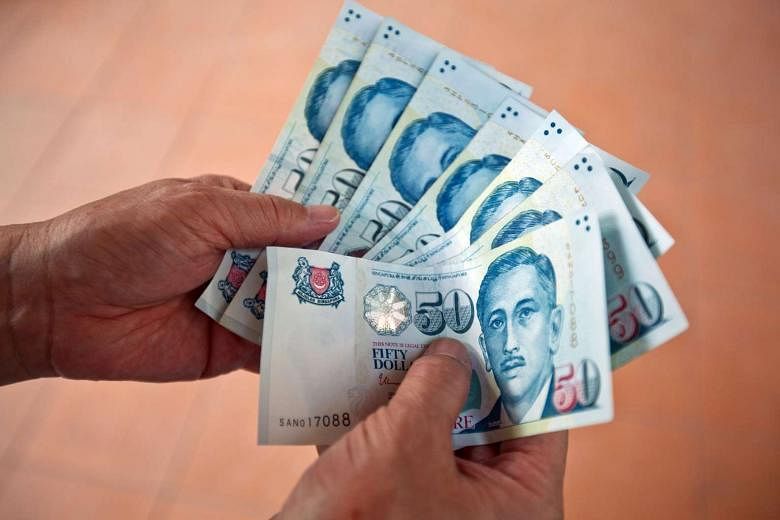SINGAPORE (REUTERS, BLOOMBERG) - Singapore's central bank on Thursday (April 14) surprised markets by setting the rate of appreciation of the Singapore dollar policy band at zero per cent, and said the economy was projected to expand at a more moderate pace in 2016 than previously envisaged.
The Monetary Authority of Singapore (MAS), which manages monetary policy by letting the Singapore dollar rise or fall against the currencies of its main trading partners, said the move was not a policy to depreciate the domestic currency, but did remove "the modest and gradual appreciation path" of its policy band.
Separately, the Ministry of Trade and Industry also released gross domestic product data showing economy stalled in the first quarter when compared to the previous three months. Year-on-year growth was 1.8 per cent.
The Singapore dollar fell 0.9 per cent to 1.3628 per the US dollar, its weakest since March 29, after the MAS decision.
PHILIP WEE, SENIOR CURRENCY ECONOMIST, DBS GROUP HOLDINGS
"There's been a deterioration of economic conditions since the last meeting. If things have already worsened why wait for October to ease?"
SEAN CALLOW, SENIOR FOREX STRATEGIST, WESTPAC, SYDNEY
"The Monetary Authority of Singapore returned to the neutral stance on the Singdollar it adopted in the wake of the global financial crisis. This surprise move indicates a gloomy outlook for regional trade.
KHOON GOH, SENIOR FX STRATEGIST, ANZ SINGAPORE
"It is definitely an easing. This is a surprise move to neutral in response to what they see as more modest growth this year and also they're expecting core inflation to come in at the lower end of their target range.
"I think it's quite possible that ongoing downside risk to global growth and weakness in the US dollar and the decline in the RMB (renminbi) effective exchange rate might have also prompted this easing move by MAS.
"Although MAS said that they have no intention to depreciate the domestic currency, I don't see this as necessarily the end of the easing cycle. If downside growth and inflation risks remain, then the next easing move would be a re-centering in October."
TRINH NGUYEN, SENIOR ECONOMIST, EMERGING ASIA, NATIXIS
"The MAS looks at the S$NEER and it has appreciated 2.3 per cent since they last met. The Singdollar has appreciated against almost everyone except the yen and ringgit.
"This is why they need to help the economy's competitiveness and communicate to markets that they are not happy with the appreciation.
The comment of neutral policy stance of zero per cent appreciation is interpreted as easing. The economy didn't expand in Q1 on a quarter on quarter basis so essentially flat. Services contracted and this is a trend we think will continue in Q2."
ANDY JI, ASIAN CURRENCY STRATEGIST, COMMONWEALTH BANK OF AUSTRALIA IN SINGAPORE
"MAS surprised with reducing the policy slope to zero. The slope was estimated to be around 0.50 per cent, which means the latest easing was a very modest move.
"The on-year 3 per cent appreciation in S$NEER (Singdollar nominal effective exchange rate) was excessive to even the most optimistic outcome. The central bank however also said that 'this is not a policy to depreciate the domestic currency, and only removes the modest and gradual appreciation path'. It is thus still stability trumps all for the MAS and the Fed's delay helped as well.


